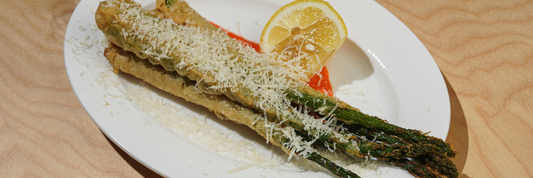Flexible cutting boards are an essential tool in modern kitchens, offering versatility, convenience, and functionality. If you’re curious about their benefits, how to use them, and why they’ve become a popular choice for home cooks and chefs alike, this guide will provide everything you need to know.
What Is Flexible Cutting Board?
Flexible cutting board is a thin, lightweight cutting surface made from materials like plastic or silicone. Unlike traditional rigid cutting boards, flexible options can bend, fold, and roll, making them ideal for transferring chopped ingredients directly into a pan or bowl. They come in various sizes, colors, and materials to suit different kitchen needs.

Benefits of Flexible Cutting Boards
Flexible cutting boards offer several advantages:
-
Ease of Use: Their lightweight design makes them easy to handle, even for prolonged food prep sessions.
-
Portability: These cutting boards are perfect for small kitchens or outdoor cooking as they take up minimal space.
-
Convenient Transfer of Food: Their ability to bend allows for easy transfer of chopped ingredients without spills.
-
Hygienic Design: Many flexible cutting boards are color-coded, helping to prevent cross-contamination during food preparation.
-
Durability: Made from high-quality materials, they resist cracking and warping, unlike some traditional boards.
-
Cost-Effective: They’re often more affordable than rigid boards, making them an accessible option for everyone.
Flexible Cutting Board Materials
Flexible cutting boards are made from a variety of materials, each offering unique benefits:
-
Plastic (Polyethylene or Polypropylene): Commonly used due to its affordability, lightweight design, and durability. BPA-free versions are ideal for safety.
-
Silicone: Non-slip, heat-resistant, and more eco-friendly, silicone boards are a premium option.
-
Composite Materials: These boards combine flexibility with added durability, making them less prone to cuts and scratches.

How to Choose the Best Flexible Cutting Board
When selecting a flexible cutting board, consider the following factors:
-
Material Safety: Choose boards that are food-safe and free from harmful chemicals like BPA.
-
Thickness and Size: Ensure the board fits your kitchen space and cutting needs. Thicker boards provide more stability.
-
Non-Slip Features: Look for silicone backing or textured surfaces to prevent sliding.
-
Color-Coding Options: Many flexible cutting boards come in sets with different colors for meats, vegetables, and fruits, helping to maintain hygiene.
-
Ease of Cleaning: Opt for dishwasher-safe boards to simplify cleaning.
How to Use Flexible Cutting Boards
Flexible cutting boards are easy to integrate into your kitchen routine. Here’s how to make the most of them:
-
Cut and Chop: Use them like any other cutting board for slicing, dicing, and chopping.
-
Transfer Ingredients: Bend the board to create a funnel shape for transferring ingredients directly into pots or bowls.
-
Use for Multiple Tasks: Assign color-coded boards for specific tasks (e.g., red for raw meat, green for vegetables).
-
Pair with Sharp Knives: Flexible cutting boards work best with sharp knives to minimize the risk of slipping.

Maintenance and Care Tips
Proper care will extend the life of your flexible cutting board:
-
Cleaning: Wash with warm, soapy water after each use. Many flexible boards are dishwasher-safe, making cleanup easy.
-
Avoid High Heat: While silicone boards can withstand heat, most plastic boards may warp if exposed to high temperatures.
-
Replace When Needed: Flexible boards can develop deep knife marks over time. Replace them when they show signs of excessive wear.
-
Store Properly: Store them flat or rolled up to save space and prevent warping.
Flexible vs. Rigid Cutting Boards
Here’s how flexible cutting boards compare to their rigid counterparts:
-
Durability: Rigid boards often last longer, but flexible boards are less prone to cracking.
-
Portability: Flexible boards are lighter and easier to carry or store.
-
Safety: Rigid boards provide a more stable surface, while flexible boards may slide without a non-slip backing.
-
Cost: Flexible cutting boards are generally more affordable.
FAQs About Flexible Cutting Boards
Are flexible cutting boards safe for knives?
Yes, most flexible cutting boards are knife-friendly. However, over time, they may show signs of wear from frequent use.
Can I put a flexible cutting board in the dishwasher?
Many flexible cutting boards are dishwasher-safe, but always check the manufacturer’s instructions.
How do I prevent a flexible cutting board from slipping?
Look for boards with non-slip backing or place a damp cloth underneath for added stability.
Are flexible cutting boards heat-resistant?
Silicone boards are typically heat-resistant, but plastic boards may warp if exposed to high heat.
How long do flexible cutting boards last?
With proper care, they can last several years. Replace them when deep knife marks appear.
Conclusion
Flexible cutting boards are a versatile and convenient addition to any kitchen. They offer portability, ease of use, and hygienic benefits that make food preparation simpler and safer. Whether you’re a professional chef or a home cook, investing in high-quality flexible cutting boards will enhance your culinary experience. By following the tips above, you can choose the perfect board and maintain it for years of reliable service.




